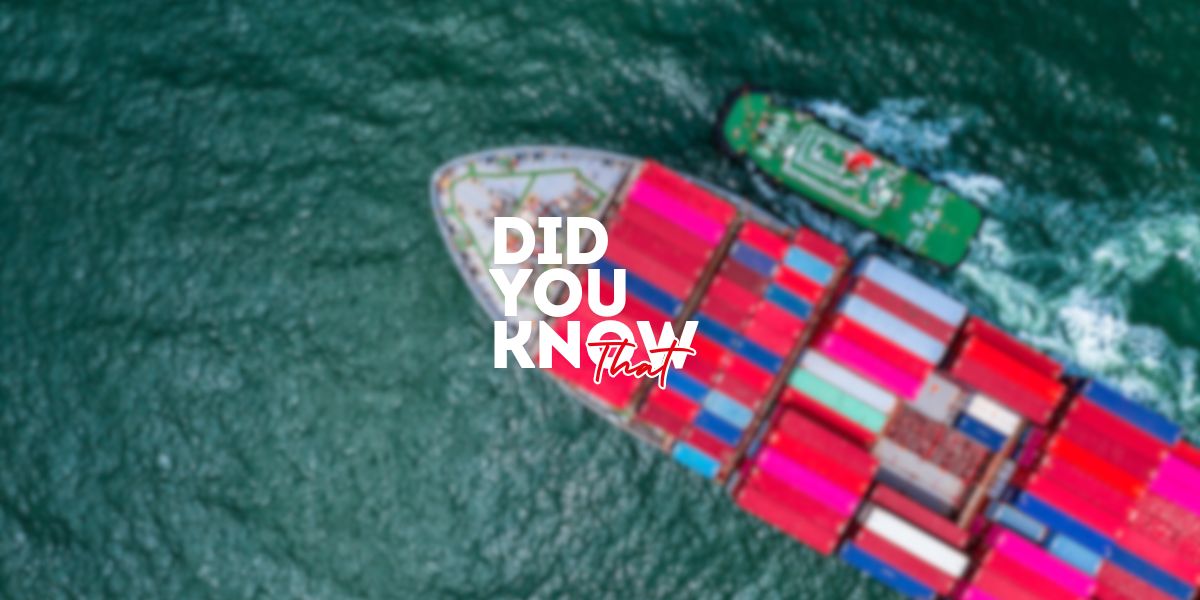Did You Know That | Week 25-26 | 2025



Did You Know That | Week 25-26 | 2025
Tariff turmoil and fleet glut cast shadow on box trade.
Did You Know That…
…Tariff turmoil and fleet glut cast shadow on box trade.
-
Global container volume growth forecast at 3% to 4% for 2025
-
US imports expected to decline sharply in the second half of the year
-
Newbuilding deliveries slowing but capacity still expected to grow due to falling congestion and limited ship recycling
-
Risk of long-term overcapacity remains
Container shipping is expected to grow 3%-4% in 2025, but headwinds loom. US imports will likely drop in the second half of the year because of tariffs and weaker economic growth, while Europe and the Mediterranean offer bright spots. Overcapacity, Middle East tensions and supply-demand imbalance keep the sector’s outlook subdued.
…Transpacific spot rates rapidly slump back toward pre-tariff reprieve levels.
-
SCFI Shanghai-US west coast spot rates assessment plunges 51% in two weeks to only $425 per feu above rate level in the week prior to US tariff reprieve
-
Aggregate US tariffs on China total 50%-55% despite the reduction in May — a tax that may prove too costly for some US importers
-
Transpacific demand could face further pressure beginning July 9 as some ‘Liberation Day’ tariffs snap back to higher levels
The predicted cargo transport boom following the pause in higher US tariff levels is quickly turning into a bust. Transpacific spot rates are in rapid retreat and the forward outlook is bearish.
…Largest containership since March 2024 transits Suez Canal.
The Suez Canal Authority is implementing ‘flexible pricing policies’ as it looks to entice traffic back through the waterway. France-based CMA CGM has agreed to resume transits through the Suez Canal after conversations with the SCA. FRENCH containership CMA CGM Osiris travelled through the Suez Canal on Wednesday, June 18, making it the largest boxship to transit the waterway since the peak of Houthi attacks on shipping in March 2024.
…Trump says the war is over. How 14 bombs may change the Middle East.
After America announces a ceasefire between Israel and Iran, big questions remain. He CAME, he bombed, he ended the war—or so President Donald Trump wants the world to believe.
Two days after a fleet of stealthy American bombers struck deeply buried Iranian nuclear facilities, Mr Trump announced a “complete and total” ceasefire in the war between Israel and Iran.
“I would like to congratulate both Countries, Israel and Iran, on having the Stamina, Courage, and Intelligence to end, what should be called, ‘THE 12 DAY WAR,’” he wrote on his Truth Social site.
Iran responded the following day with token retaliation, firing 14 missiles—one for each American MOP—at the American air base at al-Udeid in Qatar. All but one was intercepted and, thanks to Iran’s early warning, nobody was injured, posted the president.
Two hours later he proclaimed the ceasefire.
…China orders fleet to report Hormuz voyages amid protection speculation.
-
China has ordered all merchant ships to report transits through the Strait of Hormuz, fuelling speculation it aims to safeguard its vessels amid rising tensions
-
Move comes after US air strikes on Iran and renewed threats to close the vital waterway for global energy trade
-
Experts doubt Iran can sustain a blockade, but warn any disruption would have serious global economic impacts
Beijing has demanded its merchant fleet report transits through the Strait of Hormuz, amid escalating Middle East tensions and renewed threats to this critical global energy chokepoint.
…Hormuz disruption could unplug Gulf ports from global trade.
-
Simultaneous instability in the Red Sea and the Strait of Hormuz would leave few viable alternative routes for regional trade
-
Potential closure of Hormuz would isolate Middle East Gulf ports — including Jebel Ali, Abu Dhabi and Bandar Abbas — from mainline container services
-
With over 35% of Iran’s container trade transhipped through external gulf ports, strait’s closure would severely hit domestic supply chains
With the Israel-Iran conflict raising the possibility of the Strait of Hormuz’s closure, analysts warn of cascading disruptions to regional port connectivity and global logistics flows already strained by Red Sea turmoil and a potential trade cut off for Middle East Gulf hubs.
…Box carriers maintain Israeli port calls amid escalating Iran tensions.
-
Zim’s domestic operations remain unaffected by conflict, including in despite recent missile strikes; launches ‘Zim on Air’ hybrid service
-
Hapag-Lloyd pulls direct Israel services, while Maersk continues to omit Haifa as Ashdod calls continue as scheduled
Despite growing security concerns linked to Israel’s confrontation with Iran, major container lines have continued to call at Israeli ports, though several global carriers are scaling back frequencies and tightening operational protocols.
…Why a ceasefire and sanctions deal with Iran does not necessarily reopen the Red Sea.
-
Shipping risk remains despite an Iran-Israel ceasefire, while the impact on shipping has been muted
-
Signals from the US that an Iran sanctions deal may result from the ceasefire, however, will have lasting implications
-
Iran’s control over the Houthi Red Sea risk remains questionable, even with a ‘deal’
Ceasefire or not, shipping still has a lot of unresolved risk with which to deal. The fallout from the past 12 days in the Middle East could have a material impact on shipping markets.
…Germany’s federal cabinet has approved massive investments in the country's transport infrastructure.
According to transport minister Patrick Schnieder, EUR 166 billion has been earmarked for 2025-2029, an increase of more than 60% compared to the previous five years.
The bulk of the funding, EUR 107 billion, will go to the railways, followed by EUR 52 billion for roads and EUR 7.6 billion for inland waterways.
…Pakistan authorities slash tariffs to bring traffic back to Port Qasim.
Pakistan is making a noteworthy effort in its ocean trade aspirations, amid the lingering challenges posed by regional trade restrictions recently imposed by India.
…US tariff threat sees Latin American fruit exporters on the hunt for fresh markets.
Global fruit supply chains are in flux. Surging output is one factor, tariffs are another. And Valle y Pampa, one of the largest blueberry exporters in Peru, has China in its sights.
…At a tricky NATO summit, held in The Hague the past two days, a Trumpian meltdown is averted.
America’s allies have pledged to spend a lot more, but details are thin.
THE TONE was that of a parent congratulating a toddler.
“Donald, you have driven us to a really, really important moment for America and Europe and the world,” wrote Mark Rutte, the secretary-general of NATO, in a text message to Donald Trump, America’s president.
“Europe is going to pay in a BIG way, as they should, and it will be your win.”
…It’s not just Labubu dolls. Chinese brands are booming.
They are winning customers at home and abroad.
Labubu dolls are hard to come by. Even at the giant flagship store of their maker, Pop Mart, in Shanghai, throngs of customers are told they need to wait a week or longer.
The grimacing elvish creatures, which come in “blind boxes” that keep buyers in suspense over which one they might get, sell for as little as $20. But a rare variety sold for $150,000 at an auction on June 10th.
It is not just Chinese children trying to get their hands on the dolls: celebrities including David Beckham, a ex-footballer, and Rihanna, a pop star, have recently gone public with their appreciation.
…Aulophobia is a fear of flutes.
…This DYKT news bulletin will be published on the website as well.
Go to 👉 www.eaanetwork.com
Have a good day and weekend ahead!